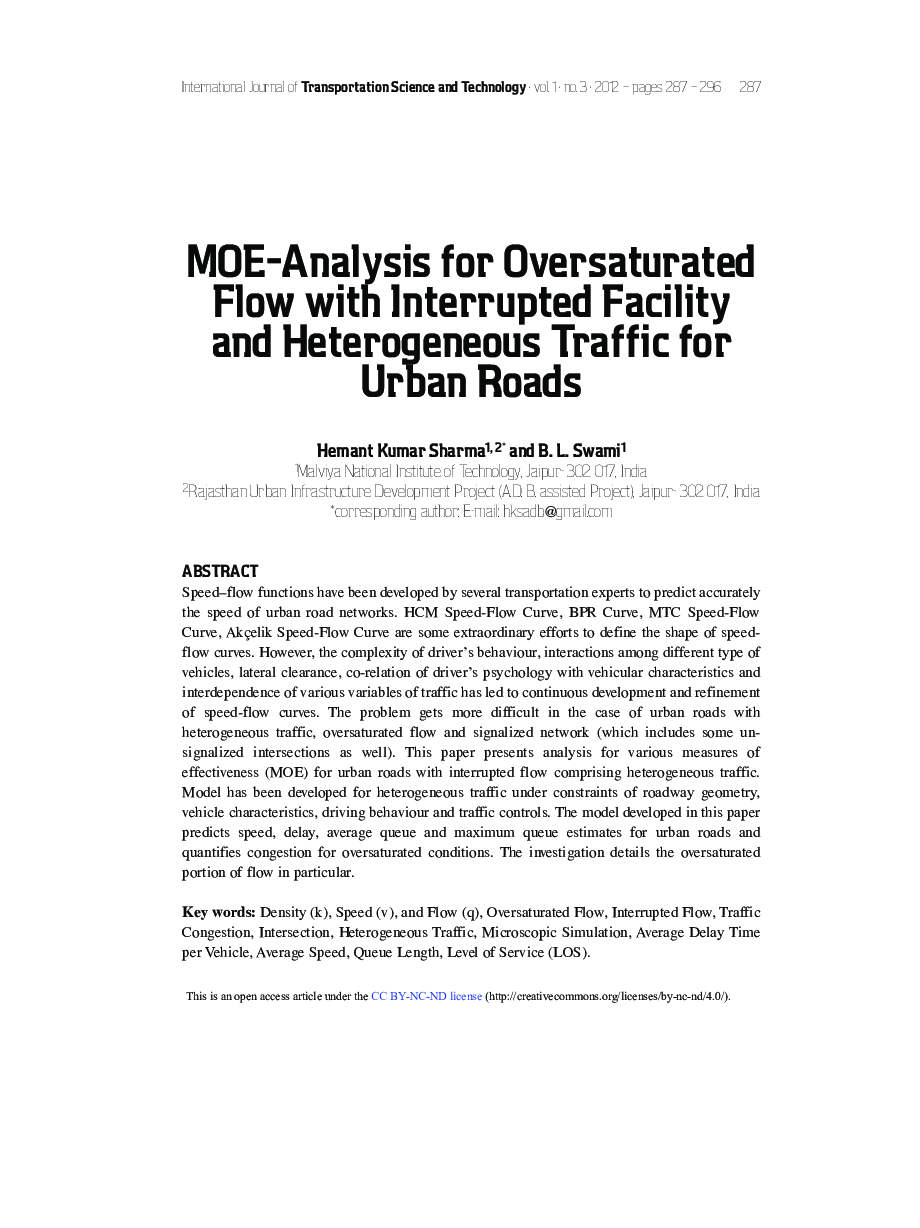| Article ID | Journal | Published Year | Pages | File Type |
|---|---|---|---|---|
| 4923031 | International Journal of Transportation Science and Technology | 2012 | 10 Pages |
ABSTRACTSpeed-flow functions have been developed by several transportation experts to predict accurately the speed of urban road networks. HCM Speed-Flow Curve, BPR Curve, MTC Speed-Flow Curve, Akçelik Speed-Flow Curve are some extraordinary efforts to define the shape of speed-flow curves. However, the complexity of driver's behaviour, interactions among different type of vehicles, lateral clearance, co-relation of driver's psychology with vehicular characteristics and interdependence of various variables of traffic has led to continuous development and refinement of speed-flow curves. The problem gets more difficult in the case of urban roads with heterogeneous traffic, oversaturated flow and signalized network (which includes some unsignalized intersections as well). This paper presents analysis for various measures of effectiveness (MOE) for urban roads with interrupted flow comprising heterogeneous traffic. Model has been developed for heterogeneous traffic under constraints of roadway geometry, vehicle characteristics, driving behaviour and traffic controls. The model developed in this paper predicts speed, delay, average queue and maximum queue estimates for urban roads and quantifies congestion for oversaturated conditions. The investigation details the oversaturated portion of flow in particular.
